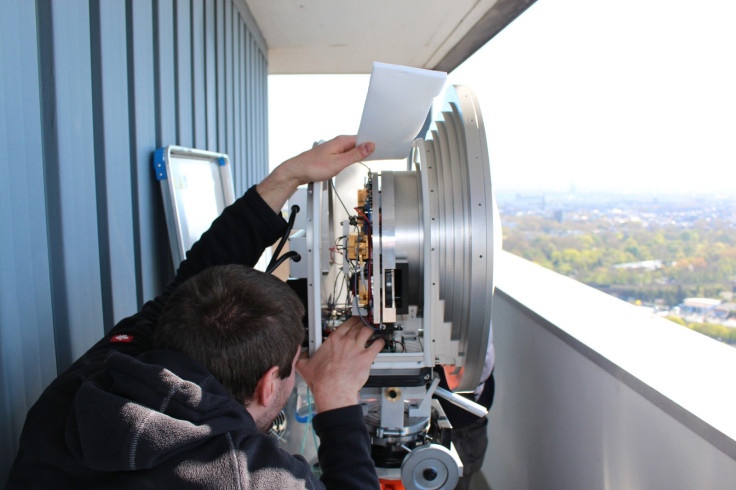German researchers achieve world record wireless data transmission speed of 6GB/s over 37km

German scientists have set a new world record by wirelessly transmitting data at the speed of 6GB/s over a distance of 37km, which is 10 times faster than any data transmission method.
Researchers from the University of Stuttgart, the Institut für Hochfrequenztechnik und Elektronik (IHE) from KIT, Radiometer Physics GmbH and the Fraunhofer Institute for Applied Solid State Physics IAF carried out their experiment using radio transmitters and receivers in the Band E millimetre wave frequency of 71-76GHz, which is meant for terrestrial and satellite broadcasting.
One radio transmitter station was located at the top of the 45 storey high Uni-Center building in Cologne, while the other station was placed on the site of the Space Observation Radar TIRA at the Fraunhofer Institute for High Frequency Physics and Radar Techniques FHR in Wachtberg.
At the moment, it is very difficult to transmit large amounts of data over a great distance due to the radio signals weakening as they get further away from the transmitter, but much bigger bandwidths are available in the 30GHz to 300GHz frequency bands, which are known as millimetre waves.
What are millimetre waves?
Millimetre waves are found in the spectrum between microwaves, which take up the 1GHz to 30GHz bands, and infrared waves, which are sometimes known as extremely high frequency (EHF) and can only be used over short distances such as a few kilometres due to high free space loss and atmospheric absorption.
Research into millimetre waves is ongoing, but if data can be transmitted effectively, the frequency would be crucial to wireless service providers such as mobile operators, who constantly struggle to provide a fast internet experience as they are running out of bandwidth from too many users accessing the internet on their phones at any one time.
In order to make data transmission over millimetre waves possible, the team from Fraunhofer IAF had to develop fully monolithically integrated millimetre wave circuits (MMICs) to make amplification of the signals much better.
To that end, the prototype transmitters they developed are able to amplify broadband signals up to 1W using gallium nitride semiconductor power amplifiers, which are then transmitted using a highly directive parabolic antenna. On the other end, the receivers feature low noise amplifiers made from high speed transistors with indium gallium arsenide semiconductors, in order to enable the detection of weak signals over a great distance.
The researchers say that transmitting data wirelessly over millimetre waves could take away the need to deploy fibre optic broadband, especially in rural areas and remote regions. This would be helpful in the UK, where a recent study by the European Commission found that high speed rural broadband coverage is only 45.9% in the UK, which is far lower than many nations in western Europe and even worse than several ex-Soviet bloc countries.
The project, which was funded by Germany's Federal Ministry for Economy and Energy (BMWi), is dedicated to make satellite internet connections faster, as well as improving terrestrial wireless internet.
© Copyright IBTimes 2025. All rights reserved.






















